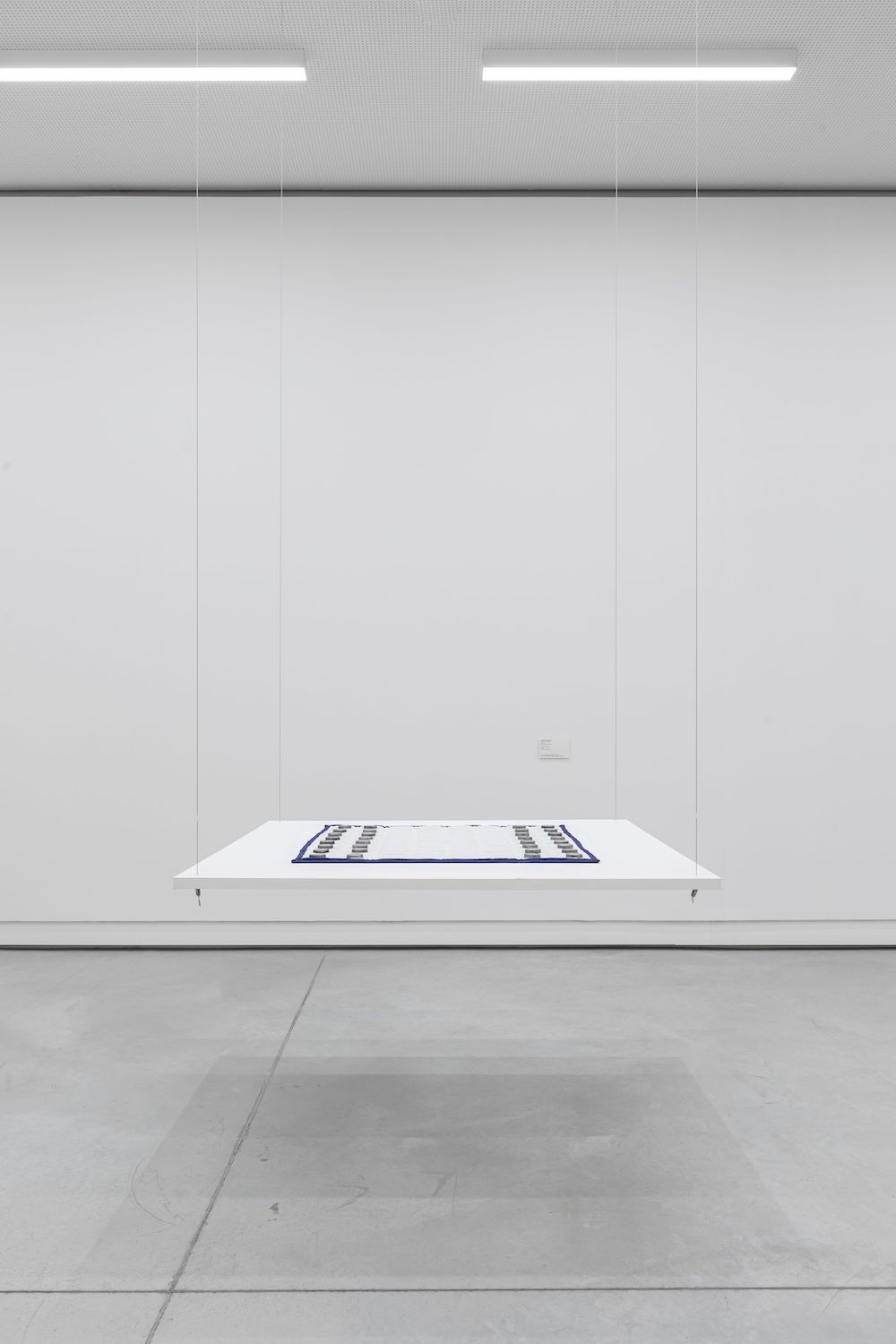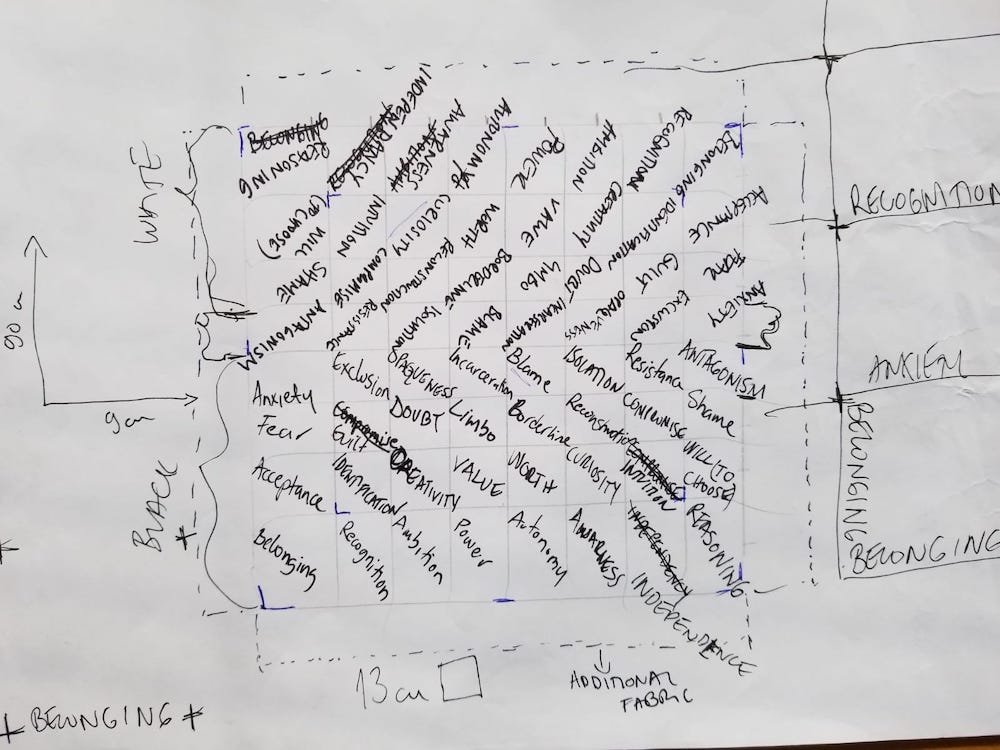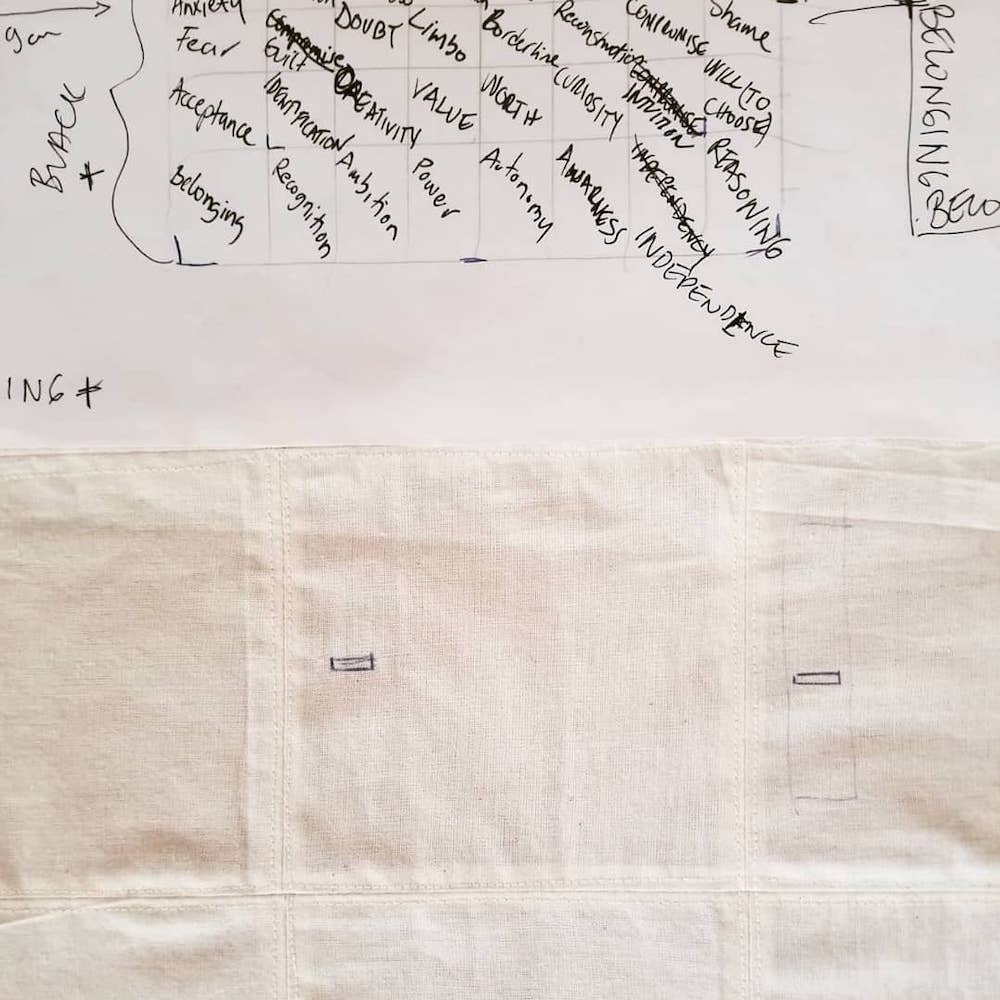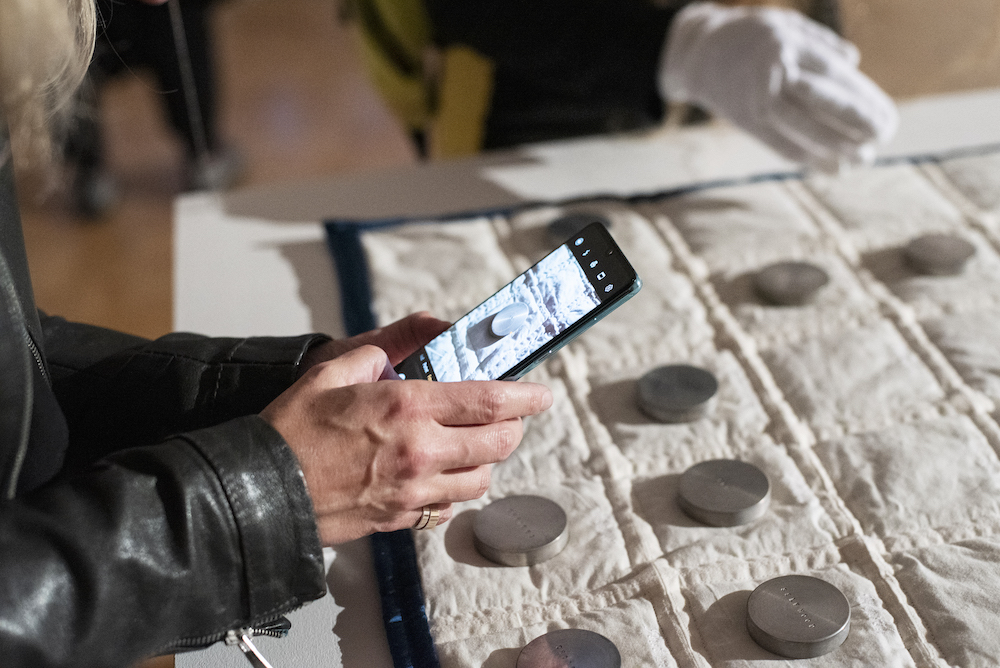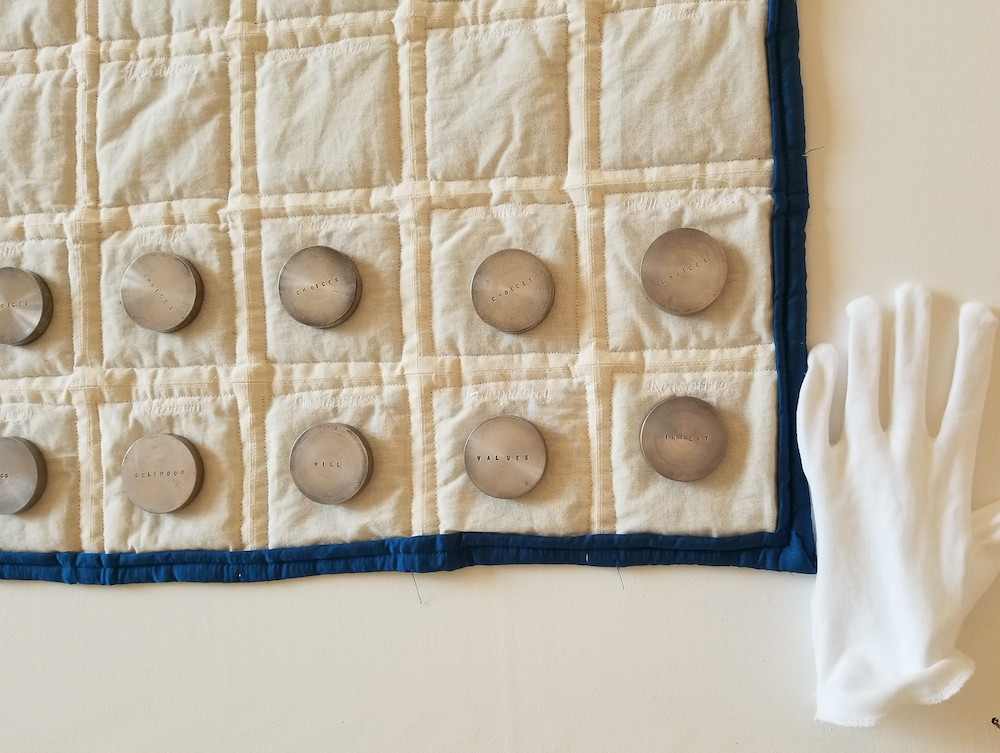How might epigenetic inheritance shape our decision-making processes and identification protocols? What insights can be drawn from the ritualisation of identity progression in cultivating more effective internal self-care mechanisms? Where do we locate the boundaries between authentic thought styles and socially constructed norms? And how do vocabularies and dialectical constellations govern our understanding of belonging and selfhood?
Chess of Rites (2019) explores the tensions between value production and the internal evolution of identity. It sits at the intersection of developmental psychology, autoethnographic excavation, and the transactional dynamics of cognitive capitalism. Central to the work is an inquiry into the transitional nature of psycho-behavioural conditioning and its relationship to systems of value and choice.
Drawing on Erik Erikson’s eight stages of psychosocial development, Jungian shadow work, and Eric Berne’s theory of Transactional Analysis, Knezović proposes a poetic and strategic model for engaging with internal narratives and the associative protocols of cognition.
The work takes the form of a handcrafted chessboard composed of silk and cotton, with each square inscribed with emotional and psychological states—compromise, shame, guilt, power, recognition, acceptance, and more—each representing a facet of the decision-making terrain. The 32 custom-engraved metal pieces resemble traditional chess figures but are imbued with symbolic roles:
- King = Ego
- Queen = Selfhood
- Rook = Intent
- Bishop = Value
- Knight = Will
- Pawn = Choices / Value
Set in mirrored opposition, the pieces reflect both the self and its ‘opponent’—the internalized other—gradually dissolving the illusion of ownership as the game unfolds. The board becomes a stage where self-reflection meets performative inquiry, and strategy is filtered through the fragility of internal logic.
Chess of Rites invites its players into a quiet confrontation with the architecture of their own psyche. Through a meditative, ludic framework, it encourages a soft taxonomy of the irrational, offering a space where thought-styles, subconscious drives, and emotional reflexes are negotiated and reimagined. In doing so, it opens up a speculative and symbolic terrain in which the self becomes both player and piece.
